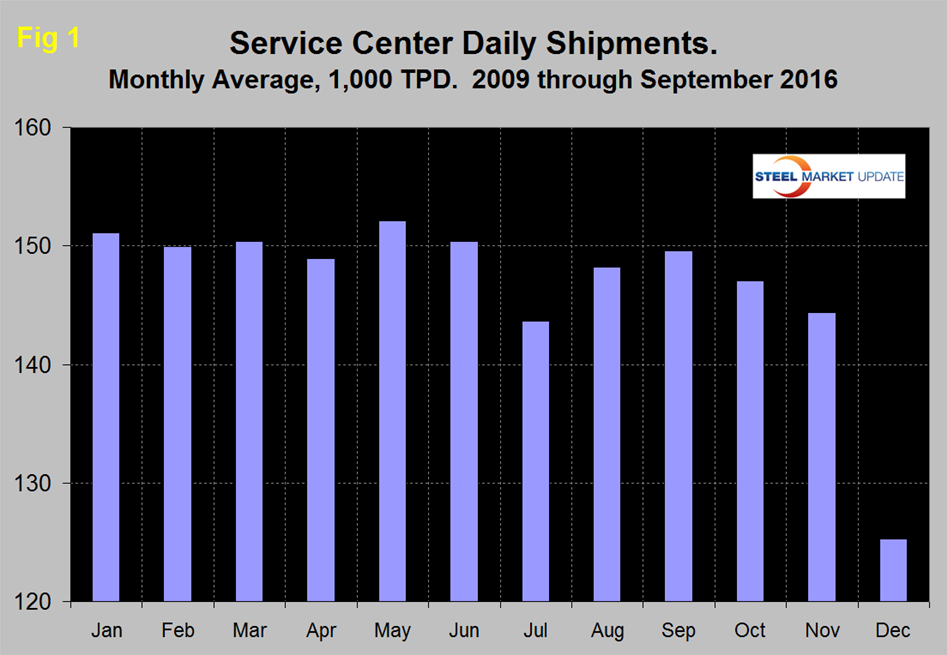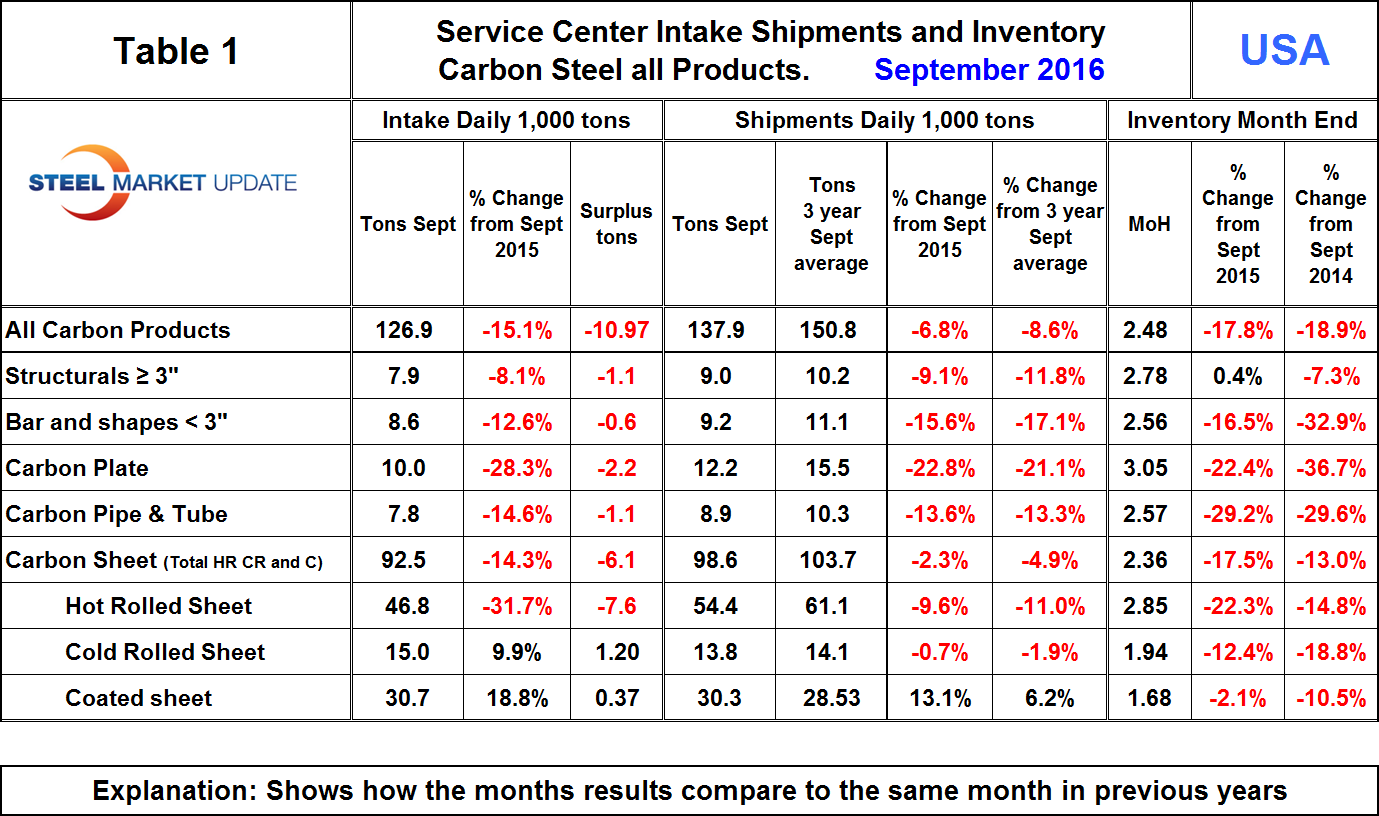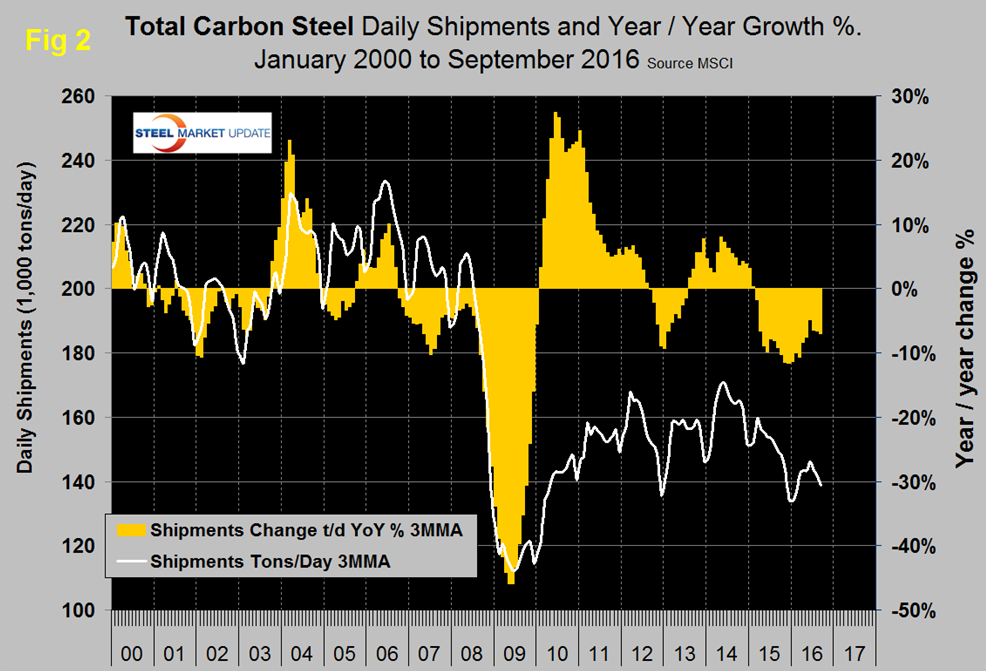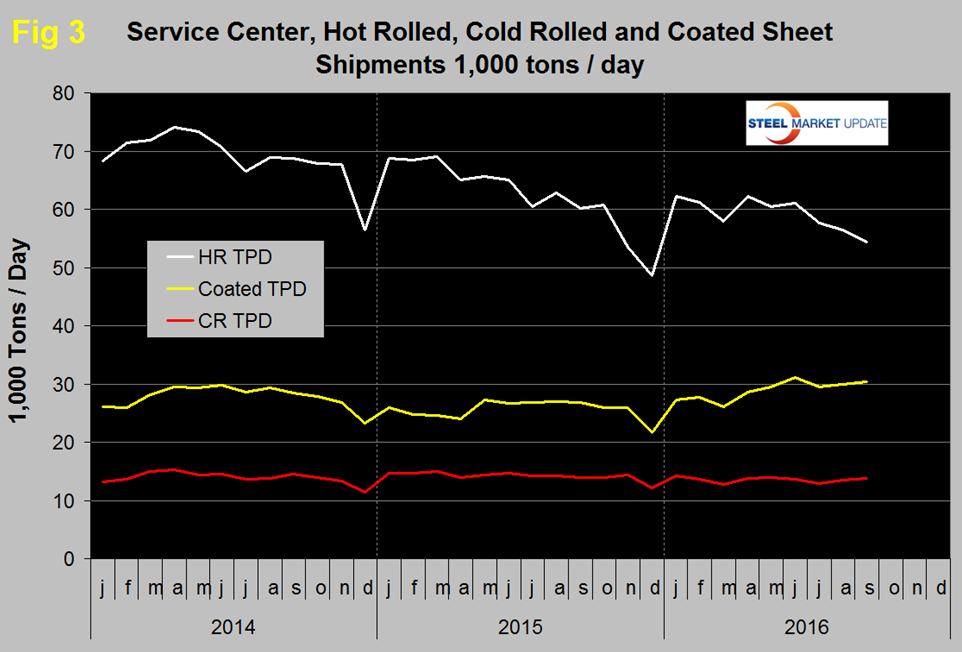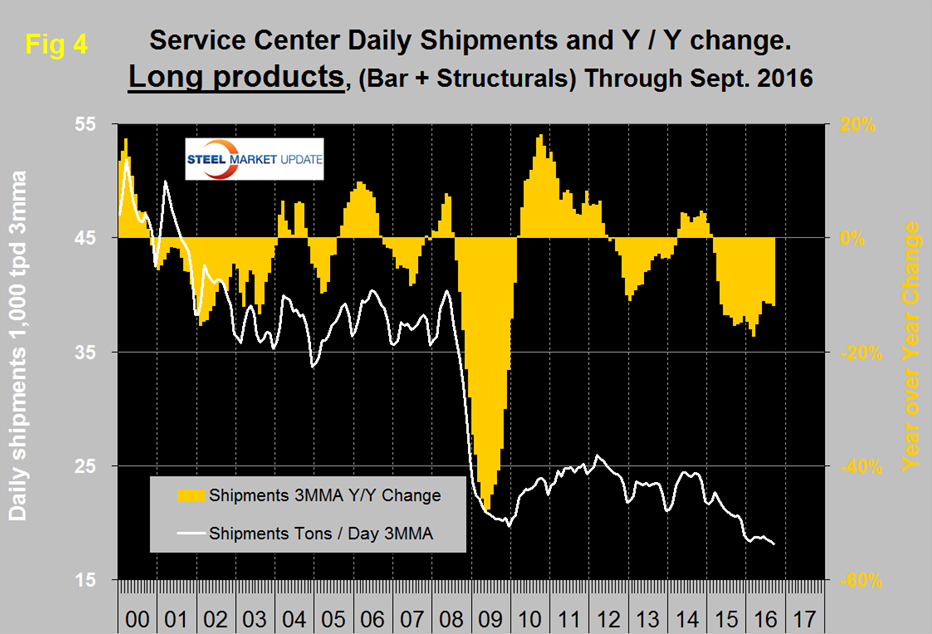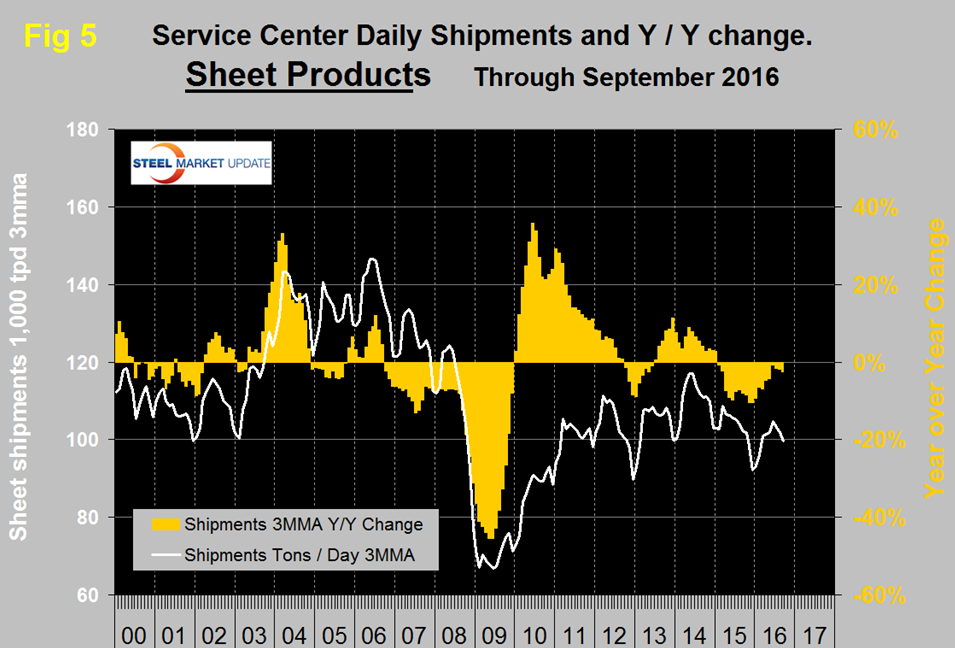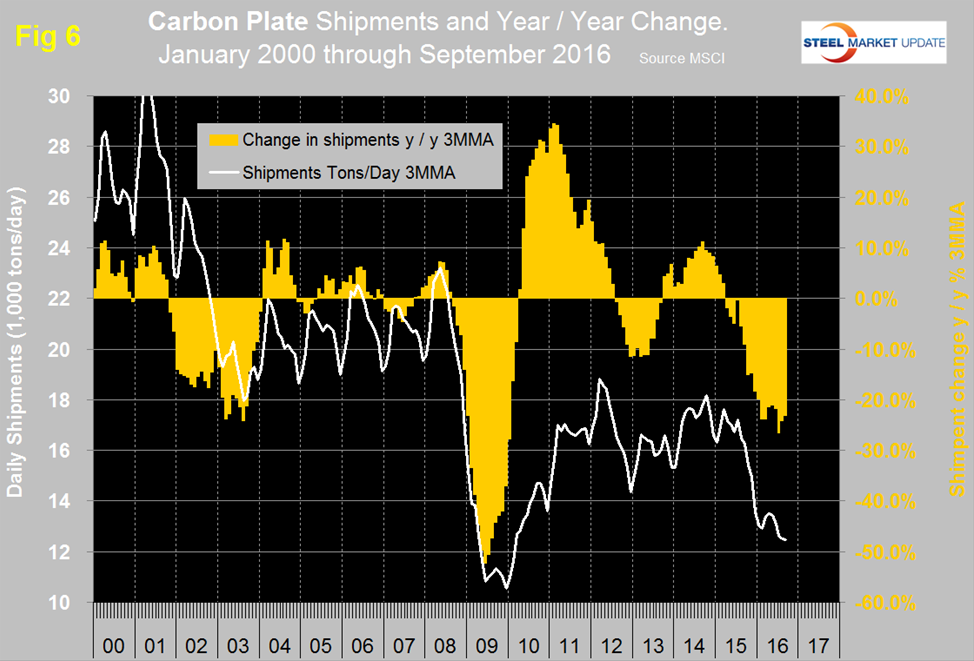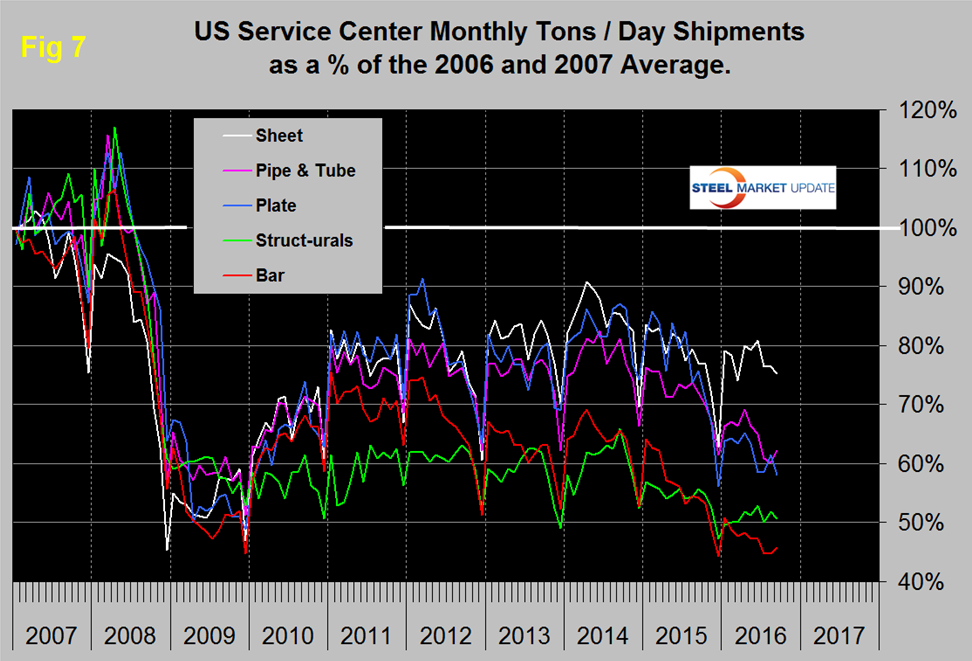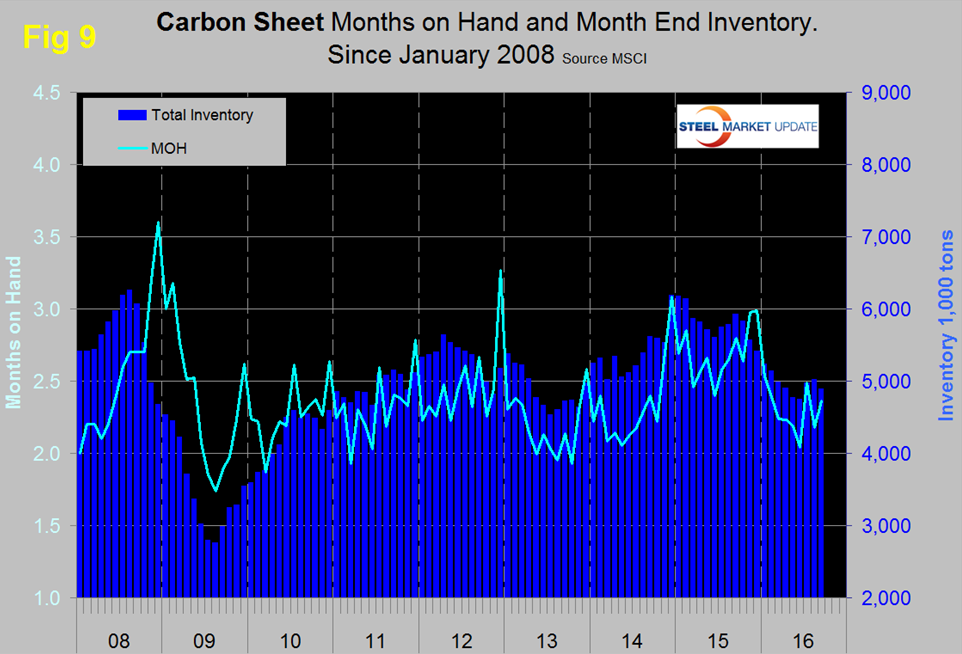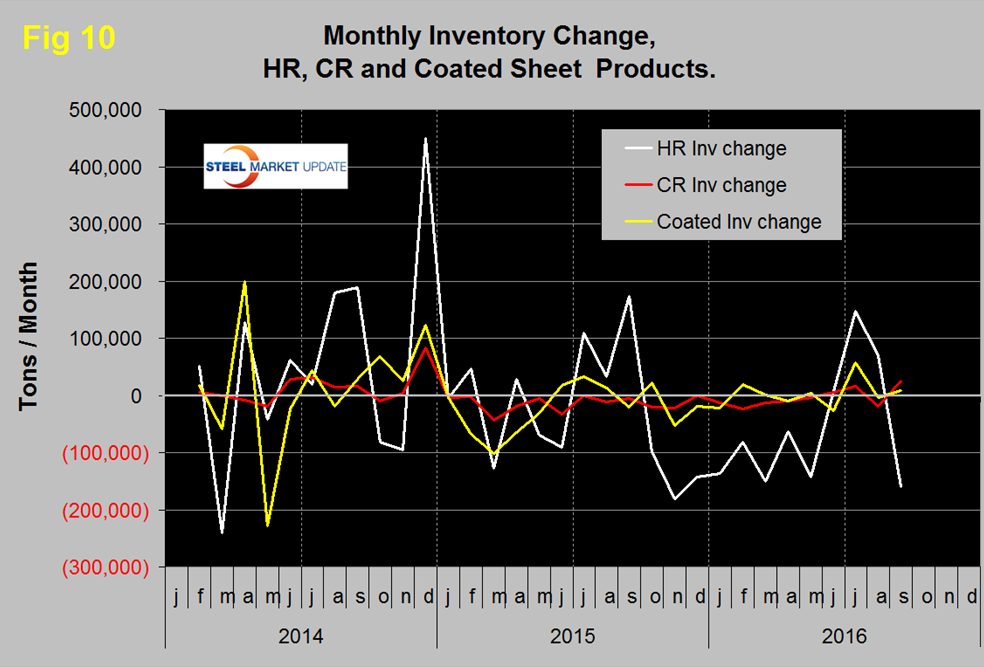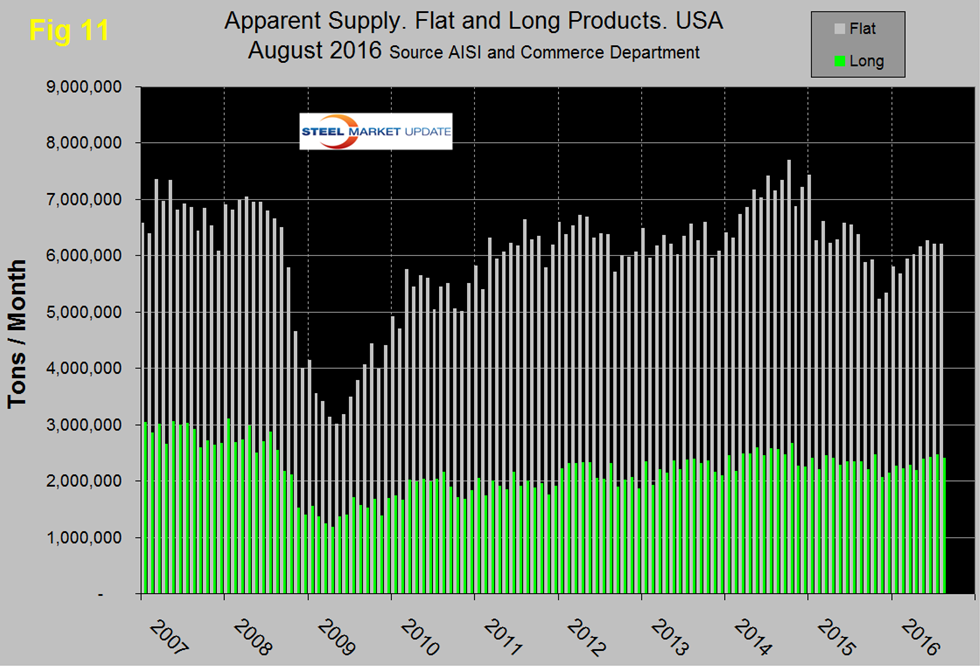Market Segment

October 18, 2016
Service Center Intake, Shipments and Inventory through September 2016
Written by Peter Wright
September was another month in which shipments by service centers failed to live up to long term expectations. Carbon steel shipments decreased by 317,800 tons, mostly as a result of the number of shipping days declining from 23 in August to 21 in September. However tons per day shipments also declined being down from 139.7 in August to 137.9 in September. Pipe & tube and bar products were up, plate, structurals and sheet products in total were down.
![]() Intake and shipments
Intake and shipments
In September total carbon steel intake at 126,900 tons per day (t/d) was 10,970 tons less than shipments. This was the first month of intake deficit after three months of surplus. The deficit averaged 14,300 tons in the four months through January, shrank to 4,300 tons in the four months through May and went into an average surplus of 4,000 tons in June, July and August. Total sheet products had an intake deficit of 6,100 t/d in September with HRC having a deficit of 7,600 t/d and CRC and coated products each having a small surplus.
Total service center carbon steel shipments decreased by 1,800 tons on a per day basis from 139,700 in August to 137,900 in September, a decrease of 1.3 percent. In the eight years since and including 2009, September t/d shipments on average have been up by 0.9 percent from August. Therefore this September was disappointing. This observation is intended to give a long term perspective because MSCI data is quite seasonal and we need to get past that before commenting in detail on current results. Figure 1 demonstrates this seasonality and why comparing a month’s performance with the previous month is usually misleading.
History tells us that we can expect t/d shipments to decrease in October and November and to collapse in December. In the SMU analysis we always consider year over year changes to eliminate seasonality. Table 1 shows the performance by product in September compared to the same month last year and also with the average t/d shipments for this and the two previous months of September. We then calculate the percent change between September 2016 and September 2015 and with the 3 year September average. Our intention is to provide an undistorted view of market direction.
In December 2015 the MSCI expanded their data to include sub sets of the major product groups and provided two years of data for 2014 and 2015. Table 1 shows the breakdown of sheet products into hot rolled, cold rolled and coated products on the same basis as for the other major product groups.
Shipments of all carbon steel products in September on a t/d basis were down by 6.8 percent y/y and were 8.6 percent less than the average September shipments for 2016, 2015 and 2014. The fact that the single month y/y growth comparison is slightly better than the three year comparison suggests that there is slight positive momentum. Figure 2 shows the long term trends of daily carbon steel shipments since 2000 as three month moving averages (in our opinion the quickest way to size up the market is the brown bars in Figures 2, 4, 5 and 6 which show the y/y change in shipments. All four of these graphs show a y/y contraction.)
Total daily shipments had a post recessionary high of 173,300 in June 2014 and as shown by the brown bars in Figure 2 have had 19 consecutive months of negative y/y growth. In September shipments of all products except coated sheet were down year over year. Sheet products in total were down by 2.3 percent. Figure 3 shows the shipment history since January 2014 of the three major sheet products.
Long product shipments from service centers are now lower than they were at the depths of the recession which considering the growth in construction takes some explaining. There may have (probably has) been a migration of buyers away from service centers as mills have had their own inventory for sale and room in their schedules. Other possibilities are that an unknown quantity of shapes has morphed from hot rolled to cold formed driven by the advantageous price of hot rolled and there has been some move from beams to hollow structural shapes in building frames. Then possibly the numbers are inaccurate because of gaps in company participation (Figure 4).
In previous reports we have combined sheet and plate as total flat rolled but these two categories have diverged so much in 2016 that it no longer makes sense to combine them. Sheet and plate products both had a good post-recession recovery. Both had some contraction in 2013 and growth in 2014 but since early 2015 they have diverged dramatically to the point that in September y/y sheet was down by 2.3 percent as plate was down by 22.8 percent. Figures 5 and 6 show the 3MMA of t/d shipments and the y/y growth for each. In 2006 and 2007, the mills and service centers were operating at maximum capacity.
Figure 7 takes the shipments by product since that time frame and indexes them to the average for 2006 and 2007 in order to measure the extent to which service center shipments of each product have recovered.
All products experience the normal end of year collapse and January pick up. The total of carbon steel products is now at 65.0 percent of the shipping rate that existed in 2006 and 2007, with structurals and bar at 50.7 percent and 45.8 percent respectively. Sheet is at 75.3 percent, plate at 58.1 percent and tubulars at 62.2 percent.
Inventories
September closed with months on hand (MoH) of 2.48 for all carbon steel products, up from 2.30 in August. All products except structurals and coated sheet had a double digit y/y decrease in inventory tonnage and tubulars were down by 29.2 percent. Figure 8 shows the MoH by product monthly since January 2009.
All products had a surge in months on hand in July driven not by an inventory volume increase but by a decrease in monthly shipments as a result of a small number of shipping days. Figure 9 shows both the monthly inventory and months on hand since January 2008 for total sheet products.
Total sheet inventory tonnage has been in decline since the beginning of 2015 with a bit of an uptick in the last two months. Figure 10 shows the change in inventory monthly for the big 3 sheet products.
Compared to HR, the monthly change in inventory tonnages of CR and coated have been quite small for the last 12 months. HR inventory experienced an abrupt negative shift in October and November last year, picked back up in June and July this year before declining again in August and September.
SMU Comment: In Figures 2, 4, 5 and 6, the white lines show t/d shipments. There was a decline in shipments for carbon steel products in total in 2015 but this year the decline has slowed. Figure 11 shows the total supply to the market of long and flat products based on AISI shipment and import data.
Total supply of long products is much better than the MSCI report of service center shipments with a volume almost double the recessionary low point. Total supply of flat rolled products peaked in October 2014, declined through November 2015 and has risen since then though volumes are still depressed compared to late 2014. For flat rolled the MSCI and AISI data are in reasonable agreement with one another. Note: this supply data is one month behind the MSCI information.
The SMU data base contains many more product specific charts than can be shown in this brief review. For each product we have ten year charts for shipments, intake, inventory tonnage and months on hand. Some readers have requested these extra charts for a particular product and others are welcome to do so.



